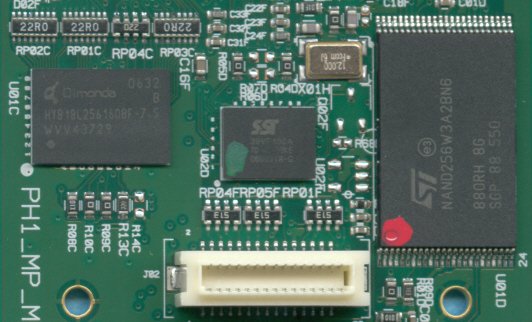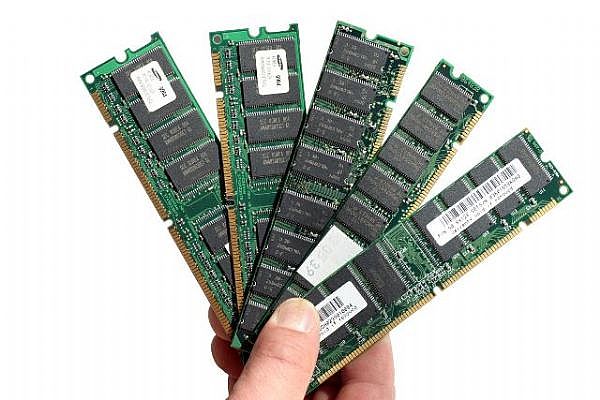We easily get confused between ROM, RAM, and Flash Memory. Here is a short explanation what are they.
ROM (Read Only Memory)
This type of memory is non-volatile which means if there is no power source the content is not lost. We can compare this to a human brain. A human brain may contain many contents, but when sleeping we don’t have access to the information stored in the brain. Computers and smartphones contain a small amount of ROM that stores firmware and critical programs that boot the device.
In smartphones, ROM is also referred as an internal memory. All your default apps and firmware are installed in the ROM. If your smartphone has 8GB of internal memory, you will only be able to use around 5GB since the remaining 3GB is being occupied by your firmware and default apps.

ROMs are used in flashing/installing a new version of firmware. For eg. you often hear about flashing a new ROM; it means you are flashing a new version of the firmware onto your smartphone. If your smartphone is currently running Kitkat, you can flash your ROM and install a new version of the Android version i.e Lollipop (if there is an official firmware for the desired smartphone).
If there is no official firmware for your smartphone, you can still install the latest firmware thanks to the different independent organizations that develops custom ROMs. A custom ROM might have performance tweaks, new features such as overclocking and so on. Read more.
RAM (Random Access Memory)
Unlike ROM, RAM does both reading and writing. It is much faster than the ROM. It is volatile which means it will lose all its data when the power source is removed. You can think ROM as a speed reader, they can do the given task very quickly but it will forget everything when the power source is cut.
RAM plays an important role when it comes to the performance of your smartphone and computer. The more RAM you have, the more programs you can fit in memory. Hence, more RAM is good for multitasking. Since there are so many apps running in the background, and we want to switch between apps as fast as possible, you want your smartphone and PC to have as much RAM as possible.

Normally, an average user should have 1GB of RAM on their smartphone, and 2GB of RAM on their PC. But, if you are tech savvy as I am and often get involved in high-end applications, intense gaming, and multimedia work, then i recommend you to have at least 2GB of RAM on your smartphone and 8GB of RAM on your PC.
But, again RAM is not only the factor that decides the performance of your device. Processors play an equal role in determining the performance of your device.
Flash Memory:
Flash Memory are the USB stick that people carry. It is used transfer files from one end to another. It has both RAM and ROM inside it. It can read the content very quickly, but processing is slow. So we can’t expect it to replace standard computer memory.








![Best Gaming Laptops in Nepal Under Rs. 250,000 (रु 2.5 Lakhs) [2025] Best Gaming Laptops Under 2.5 lakhs in Nepal [Feb 2025 Update]](https://cdn.gadgetbytenepal.com/wp-content/uploads/2025/02/Best-Gaming-Laptops-Under-2.5-lakhs-in-Nepal-Feb-2025-Update.jpg)
![Best Gaming Laptops in Nepal Under Rs. 120,000 (रु 1.2 Lakhs) [2025] Best Budget Gaming Laptops Under Rs 120000 in Nepal 2025 Update](https://cdn.gadgetbytenepal.com/wp-content/uploads/2025/05/Best-Budget-Gaming-Laptops-Under-Rs-120000-in-Nepal-2024-Update.jpg)
![Best Laptops Under Rs. 80,000 in Nepal [2025] Best Laptops Under 80,000 in Nepal March 2025 Update](https://cdn.gadgetbytenepal.com/wp-content/uploads/2025/03/Best-Laptops-Under-80000-in-Nepal-March-2025-Update.jpg)
![Best Gaming Laptops in Nepal Under Rs. 200,000 (रु 2 Lakhs) [2025] Best gaming lapotp under 2 lakhs Nepal Feb 2025](https://cdn.gadgetbytenepal.com/wp-content/uploads/2025/01/Best-Gaming-Laptops-Under-2-Lakh-Nepal-Feb-2025-Update.jpg)

![Best Mobile Phones Under Rs. 15,000 in Nepal [Updated 2025] Best Phones Under 15000 in Nepal 2024 Budget Smartphones Cheap Affordable](https://cdn.gadgetbytenepal.com/wp-content/uploads/2024/03/Best-Phones-Under-15000-in-Nepal-2024.jpg)
![Best Mobile Phones Under Rs. 20,000 in Nepal [Updated] Best Mobile Phones Under NPR 20000 in Nepal 2023 Updated Samsung Xiaomi Redmi POCO Realme Narzo Benco](https://cdn.gadgetbytenepal.com/wp-content/uploads/2024/01/Best-Phones-Under-20000-in-Nepal-2024.jpg)
![Best Mobile Phones Under Rs. 30,000 in Nepal [Updated 2025] Best Phones Under 30000 in Nepal](https://cdn.gadgetbytenepal.com/wp-content/uploads/2025/01/Best-Phones-Under-30000-in-Nepal.jpg)
![Best Mobile Phones Under Rs. 40,000 in Nepal [Updated 2025] Best Phones Under 40000 in Nepal 2024 Smartphones Mobile Midrange](https://cdn.gadgetbytenepal.com/wp-content/uploads/2024/02/Best-Phones-Under-40000-in-Nepal-2024.jpg)
![Best Mobile Phones Under Rs. 50,000 in Nepal [Updated 2025] Best Phones Under 50000 in Nepal](https://cdn.gadgetbytenepal.com/wp-content/uploads/2025/01/Best-Phones-Under-50000-in-Nepal.jpg)
![Best Flagship Smartphones To Buy In Nepal [Updated] Best flagship phone 2025](https://cdn.gadgetbytenepal.com/wp-content/uploads/2024/07/Best-Flagship-Phones-who-is-it-ft-1.jpg)